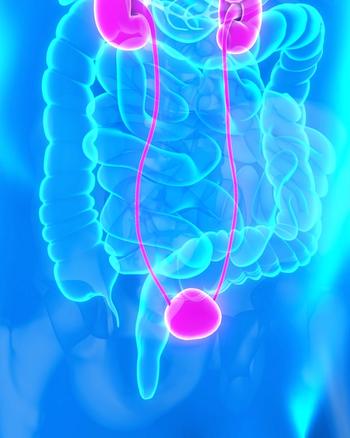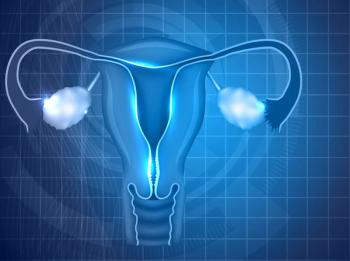
Oncology NEWS International
- Oncology NEWS International Vol 10 No 8
- Volume 10
- Issue 8
Iressa Targets HER2-Overexpressing Tumors That Coexpress HER1
SAN FRANCISCO-Potentially therapeutic concentrations of ZD1839 (Iressa) inhibit phosphorylation in HER2-overexpressing breast tumor cell lines that coexpress HER1, Stacy Moulder, MD, Vanderbilt University Medical Center, said at the 37th Annual Meeting of the American Society of Clinical Oncology (ASCO).
SAN FRANCISCOPotentially therapeutic concentrations of ZD1839 (Iressa) inhibit phosphorylation in HER2-overexpressing breast tumor cell lines that coexpress HER1, Stacy Moulder, MD, Vanderbilt University Medical Center, said at the 37th Annual Meeting of the American Society of Clinical Oncology (ASCO).
Iressa is an investigational oral epidermal growth factor receptor (EGFR, also known as HER1) tyrosine kinase inhibitor, made by AstraZeneca. Preclinical evidence suggests that Iressa inhibits signaling by blocking the putative HER1/HER2 heterodimer and that inhibition can be augmented by the addition of the anti-HER2 monoclonal antibody trastuzumab (Herceptin).
In her presentation at an ASCO integrated symposium, Dr. Moulder said that HER2 is overexpressed in 20% to 30% of breast carcinomas. HER1 may not have as high an expression rate by immunohistochemistry (IHC); however, because HER1 and HER2 act together, the HER1 kinase may be responsible for activating the HER2 receptor.
She explained that HER2 lacks an activating ligand and is usually turned on by partnering with another receptor. The fact that HER2 is constantly activated in some breast cancers hints that transactivation of its kinase may occur via HER1.
An agent such as Iressa that blocks the HER1 receptor, therefore, potentially could block HER2 phosphorylation as well. "Since it has been established clinically that antibodies against HER2 are a therapeutic strategy in breast cancer patients, we wanted to test this preclinically," Dr. Moulder said in an interview.
The investigators first examined the effect of Iressa against isolated HER1 and HER2 receptors. They found that the concentration of Iressa needed to block HER1 (an IC50 of 0.02 µM) was much lower than that needed to block HER2 (IC50 of 3.7 µM). "This is important," Dr. Moulder stated, "because steady state levels of 0.9 µM have been achieved in phase I/II clinical trials among patients receiving 250- to 500-mg doses of Iressa."
In BT-474 and SKBR-3 breast cancer cell lines, which coexpress HER1, much lower concentrations of Iressa (1 µM) were able to block HER2. The MDA-453 breast cancer cell line, which does not coexpress HER1, however, was not affected by 1 µM levels of Iressa.
These findings suggests that Iressa-mediated inhibition of the HER1 kinase results in in vivo inhibition of HER2 phosphorylation, she said.
Dr. Moulder underscored that HER1 coexpression is difficult to measure and may not be detected in some tumors using standard tumor-staining techniques. "We have lots of HER2 on the cell surface of these cells, and we have coexpression of HER1, meaning that it is merely also there," she said. In the Vanderbilt studies, the researchers used flow cytometry to detect the receptor, which is much more sensitive than IHC.
"It may be that clinically we can’t detect HER1, but that doesn’t mean that there is not a functioning HER1 molecule there that can be used to block HER2," Dr. Moulder said.
The investigators next looked at possible synergy with therapy combining Iressa and trastuzumab to block the family of receptors from interacting with one another. Trastuzumab, Dr. Moulder noted, sequesters HER2, preventing it from interacting with any of the other EGFR family members.
Iressa in NSCLC
In an ASCO poster presentation, Vincent Miller, MD, of Memorial Sloan-Kettering Cancer Center, reported final results of a phase I study of ZD1839 (Iressa) in 25 previously untreated patients with stage IIIb/IV non-small-cell lung cancer (NSCLC).
Patients received Iressa in combination with carboplatin (Paraplatin) and paclitaxel (Taxol). Dr. Miller said that 68% of patients had a major response, including one complete response, or disease stabilization. The agent was well tolerated with no novel toxicities observed.
A phase III trial of Iressa in advanced NSCLC has completed enrollment of more than 2,000 patients at 477 centers around the world, according to AstraZeneca. All patients receive standard therapygemcitabine (Gemzar)/cisplatin (Platinol) or paclitaxel/carboplatinplus Iressa 250 mg/d, Iressa 500 mg/d, or placebo.
"Looking at the SKBR-3s, a cell line that overexpresses HER2 and is a HER1 coexpressor, we found that Iressa inhibited growth better than trastuzumab, and that putting the two together did not augment the effect," she said. Based on that experiment alone, there is no rationale for combining the drugs, she said. However, investigators also used flow cytometry to look at the percentage of apoptotic cells induced by Iressa, trastuzumab, or the combination. The percentage was 0.56% in untreated cells, 1.06% with Iressa, 1.52% with trastuzumab, and 5.26% with the combination of Iressa/trastuzumab. "We saw a fivefold increase with the combination, compared with either agent alone," she said.
The researchers also looked at the combination’s effect on murine xenograft breast cancer models. Tumors were allowed to grow to 200 mm3 before initiating Iressa, trastuzumab, or both. The results showed that all three inhibited cell growth, compared with controls, with substantial tumor regression seen with the combination, compared with trastuzumab alone (P = .067).
Finally, analysis of the agents’ effect on harvested breast cancer tumors showed 29% of controls to be in S phase, compared with 14.0% for Iressa, 22% for trastuzumab, and 10.4% for the combination (P = .001, compared with trastuzumab alone or controls).
Dr. Moulder noted that trastuzumab has demonstrated efficacy in combination with breast cancer chemotherapy regimens and has been tolerated as a single agent for prolonged periods (more than 5 years). "Iressa is targeted therapy that will possibly offer lower toxicity. We hope that patients will be able to tolerate this biologic therapy for longer periods, compared with combination chemotherapy/Herceptin regimens," she said.
After the meeting, Dr. Moulder told ONI that a phase II ECOG trial of trastuzumab plus Iressa in metastatic breast cancer has received NIH approval and should begin enrolling patients shortly. Criteria for patients will include HER2 positive (+3 by IHC) and/or HER2 amplified by FISH; two or fewer prior chemotherapy or hormonal therapies for metastatic disease; and no prior therapy with trastuzumab. Treatment will be trastuzumab (2 mg/kg/wk) plus Iressa (500 mg/d) until disease progression. Endpoints will be response rate and time to disease progression.
Articles in this issue
Newsletter
Stay up to date on recent advances in the multidisciplinary approach to cancer.






















































































